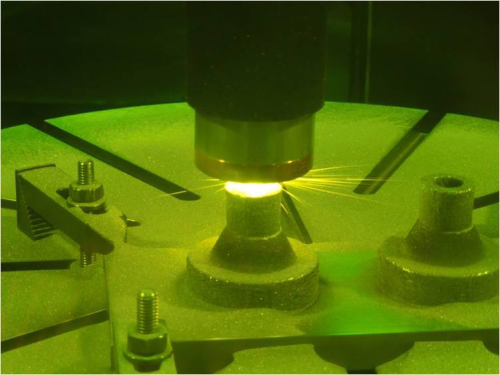
Although gradient alloys have been created in the past in research and development settings, this is the first time these composite materials have been used in making objects, such as a mount for a mirror, according to the team.
The process would make it possible to create a metal object with different properties at either end, for example with one side with a high melting temperature and the other a low density, or one side could be magnetic and the other not. This is a potential improvement on making two halves and welding them together.
The process works by depositing layers of metal on a rotating rod, thus transitioning metals from the inside out, rather than adding layers from bottom to top, as in the more traditional 3D printing technique. A laser melts the metal powder to create the layers.
Improving space parts
The scientists have been developing the process to improve the methods of combining parts made of different materials in NASA's Mars Science Laboratory mission, which landed the Curiosity rover on the Red Planet in 2012.
"We're taking a standard 3D printing process and combining the ability to change the metal powder that the part is being built with on the fly," said Douglas Hofmann, a researcher in material science and metallurgy at JPL, and visiting associate at Caltech. "You can constantly be changing the composition of the material."
"You can have a continuous transition from alloy to alloy to alloy, and you can study a wide range of potential alloys," said R. Peter Dillon, a technologist at JPL. "We think it's going to change materials research in the future."


